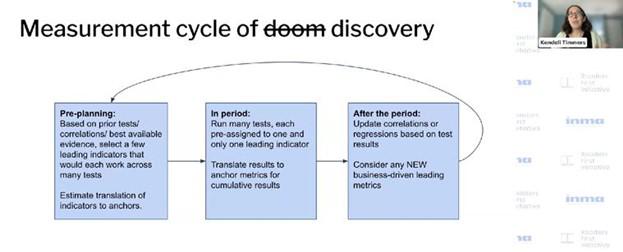Choosing and Using Audience Metrics
Data on reader behavior is key to maximizing conversion to subscribers. But which metrics are important and how can AI help optimize the operation of a personalized paywall?
Digital subscriptions have become an integral part of publishers’ revenues, making up a $650 billion market that is expected to double by 2025. Consequently, engagement data capable of revealing the path readers take to become subscribers is critical to business planning. But with hundreds, thousands, or even millions of readers to track and even more metrics to account for, publishers must concentrate on the metrics that matter most.
In this article we identify the most useful engagement metrics for understanding reader behavior and explore the ways in which publishers successfully leverage these data sets — and emerging AI-powered tools — to drive subscriptions.
Converting readers into subscribers
The International News Media Association (INMA) outlines three overarching considerations publishers must keep in mind to understand the reader-to-subscriber conversion path:
- Identifying reader type. Not all digital readers are created equal. Many are casual readers who only visit a publication’s website on specific occasions. Others may be regular visitors. Some may even be brand loyalists (though INMA notes this cohort usually makes up less than 2% of an audience). To convert a reader to a subscriber, it’s imperative to identify where they fall on this spectrum of engagement. Each reader segment has “different mindsets, different interests, and different amounts of time on their hands. So there is no single approach that works across the spectrum.”
- Value exchange. In an increasingly cluttered digital landscape, publishers must offer content readers find valuable if they are to provide their data. Again, it’s essential to keep the spectrum of reader engagement in mind; what a loyal reader finds valuable will likely vary significantly from what attracts a casual visitor. INMA recommends “to focus more on what the user needs, not who they are, and to find new things they value. For example, users may come to read an article, but stay for the notifications.”
- Effective data use. Data is only as valuable as the framework that makes it actionable, so publishers must have a strategy in place to identify, measure, and report on key metrics. As with developing an approach to addressing the spectrum of readership, there is no one-size-fits-all method for developing a data strategy; however, INMA recommends involving the whole team for the most effective results.
The most revealing engagement metrics
Though each publication has a unique content offering, audience, and strategy, there are engagement metrics that are broadly insightful. An expert round-up from The Audiencers on the best data to measure a subscription model declares that “instead of simply tracking the engagement metrics that everyone else is following, turn the question around to look at your data first, finding the answers in your most engaged, high-value readers.” This means carefully examining data sets that reveal reader behavior, such as:
- Newsletter opt-in rates — Newsletters not only indicate a direct relationship with readers and serve to nurture habit and engagement, they can also reveal key reader preferences and interests.
- Percentage of known readers — Though historically measured by unique visits, registrations are becoming a preferred metric to measure the likelihood to subscribe and reduce churn. For example, The Audiencers reports the New York Times’ registration model increased subscriber conversion rates by at least 40%.
- Diversity of page views — Page views have long been a standard metric, but the experts believe diversity of page views is the better indicator of reader potential since a broader exposure to content “‘appears to deepen likely subscribers’ perception of the value proposition.’”
- Media time — Data scientists quoted by The Audiencers state, “conversion probability increases by 130 times if the media time increases by 10 minutes per week. The churn probability is halved if the media time increases by 10 minutes per week.”
- Lifetime value (LTV) — LTV, or the average revenue you can expect a subscriber to generate, is determined by calculating the subscriber value. Estimating profitability is essential in and of itself, but “the main value lies in analyzing these high-value subscribers, asking yourself what ‘type’ of engagement correlates with high retention rates.”
- Churn rate — It’s widely known that it costs more to acquire a new subscriber than retain an existing one, therefore subscriber churn is a key metric to track when measuring any subscription model.
Making reader metrics work
With so many actionable metrics available, it’s easy for publishers to become paralyzed by the numbers and fail to respond to them, resulting in a data doom loop. This is why it’s so important to implement a comprehensive data strategy that keeps the most important metrics front and center.
Take the New York Times, for example. As one of the largest publications in the world, the Times has an abundance of data at its disposal. But instead of falling into a doom loop, the Times’ vice president of data and insights, Kendell Timmers, implemented a “metric hierarchy” to create a “measurement cycle of discovery.”
The discovery loop begins with a pre-planning stage where key performance indicators (KPIs) are identified. Timmers prioritizes engagement metrics related to churn but advises “indicators should not be highly correlated with each other; they should be working on slightly different parts of the business.” Next is the “in period” stage, during which the selected KPIs are tested. Then following this testing period, “Timmers updates correlations based on results and considers any new business-driven leading metrics.”
The beauty of Timmers’ discovery loop is that it replaces guesswork with “real numbers” the Times can use to identify the optimal metrics to track.

[Source: INMA, 2023 Conference Blog]
Using AI to manage a personalized paywall
From algorithms that recommend content and drive engagement to personalized content based on reader preference, AI is being used in increasingly innovative ways to drive subscriptions.
In a video for Reuters, Steven Neubauer, managing director of Swiss daily Neue Zürcher Zeitung (NZZ), shares how the publication is driving digital subscriptions by tailoring its paywall experience with machine learning technology. Instead of showing all potential subscribers the same paywall, NZZ deploys AI “to derive dynamic segments” and “identify patterns of preference.” NZZ puts this insight into action by determining a propensity score for their registered users on a daily basis, indicating the level of engagement and strength of each lead. Readers are allowed to explore the NZZ uninterrupted until they have reached a propensity score that indicates they are “ready to pay,” at which point the “individualized paywall” is delivered.
Digital Content Next reports “key activities unlocked by this technology [AI] — such as data analytics and automation — are among the top investment areas for publishers,” indicating there’s more innovation like this on the horizon.
With the competition for subscription revenue heating up, publishers would be wise to approach AI with an open mind; this might be one area in which AI application can already claim to deliver significant benefits.

